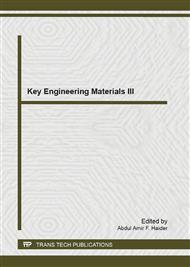p.212
p.217
p.225
p.229
p.234
p.239
p.243
p.249
p.254
Enhancement the Dissolution Rate and Solubility of Poorly Soluble Drugs: Review
Abstract:
The use of reduction and nucleation technologies in nanosize active pharmaceutical ingredient (API) is as an enabling to bring improved drug products to the marketplace demand as well as for improved drug delivery. nanoPharmaceutical field represents a hopeful set of pharmaceutical materials offering the prospect of better alternatives to optimize drug physical properties and biopharmaceutical issues such as solubility, stability and bioavailability in pharmaceutical development without changing the chemical composition of the API, thereby, giving new patentable solid forms. With physically improved solid API may impact the the pharmaceutical intellectual property landscape. Nanoparticle formation is achievable in many ways, although primarily through particle reduction or through manipulation of the nucleation mechanism. Keywords: active pharmaceutical ingredient; drug delivery; ultra rapid freezing.
Info:
Periodical:
Pages:
234-238
Citation:
Online since:
May 2013
Price:
Сopyright:
© 2013 Trans Tech Publications Ltd. All Rights Reserved
Share:
Citation:


